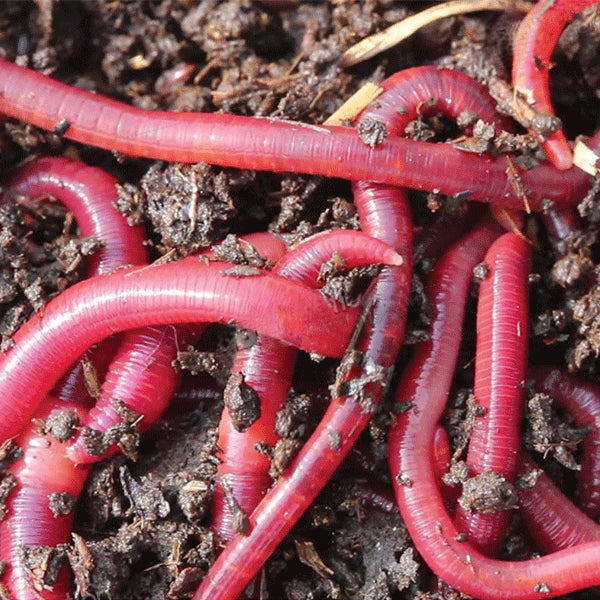Red Wigglers: Your Eco-Friendly Remedy for a Greener Yard
Red wigglers, or Eisenia fetida, provide a sustainable approach to boosting yard health through vermicomposting. By integrating red wigglers into your horticulture practices, you can successfully manage waste while nurturing a vibrant ecological community.
(redworms for composting)
What Are Red Wigglers?
Although typically incorrect for regular earthworms, red wigglers (Eisenia fetida) are an unique varieties known for their performance in composting raw material. These worms grow in abundant, organic atmospheres, such as compost stacks and vermicomposting systems, where they play a critical duty in breaking down waste. Unlike their more typical equivalents, red wigglers like a warmer habitat, generally in between 55 ° F and 77 ° F, which optimizes their activity and efficiency.
Red wigglers are defined by their reddish-brown coloration and segmented bodies, which can mature to 4 inches in size. They possess a distinct ability to consume and absorb natural products at an outstanding price, refining approximately half their body weight daily. This rapid decay procedure not just improves the dirt but likewise adds to the general health of the yard environment.
In regards to recreation, red wigglers are respected, efficient in creating cocoons that include multiple eggs. This enables fast populace development, making them an excellent choice for composting undertakings. Their adaptability and voracious appetite for natural waste setting red wigglers as an essential ally for ecologically conscious gardeners looking for lasting practices.
Benefits of Making Use Of Red Wigglers
Utilizing red wigglers in the yard uses many benefits that boost both dirt top quality and plant wellness. These earthworms are remarkable decomposers, damaging down raw material such as kitchen area scraps and backyard waste into nutrient-rich castings. These castings, frequently described as "worm gold," provide crucial nutrients that improve soil fertility, advertising vivid plant growth.
Red wigglers additionally enhance soil framework. Their burrowing task aerates the soil, facilitating much better water infiltration and root penetration. This leads to a healthier root system, which is vital for nutrient uptake and total plant vitality. The presence of red wigglers raises microbial task in the dirt, producing a thriving community that contributes to illness resistance and enhanced plant wellness.
An additional considerable advantage of using red wigglers is their capability to decrease waste. In summary, integrating red wigglers right into gardening techniques yields significant benefits, making them an important enhancement to any type of eco-conscious yard.
(Lake Hickory Worms,)
Exactly How to Begin Vermicomposting
To begin vermicomposting, it's necessary to develop an ideal atmosphere for red wigglers to prosper, as their success straight affects the performance of the composting procedure. Begin by picking a container, such as a plastic or wooden container, with adequate drain and air flow. A dimension of roughly 2 square feet is perfect for a home, permitting a convenient worm population.
Following, prepare bed linen product that is wet but not overly wet. Shredded newspaper, cardboard, and coconut coir are exceptional selections, giving a comfy habitat while also acting as a carbon resource. Load the bin with 4 to 6 inches of bedding.
After developing the bed linens, present your red wigglers. A normal starting population is about 1 pound of worms, which can eat roughly half an extra pound of food scraps daily. It is important to add food scraps gradually, concentrating on veggie peelings, fruit waste, and coffee premises, while staying clear of meat, milk, and oily foods to stop odors.
Maintaining a Healthy And Balanced Worm Container
When your red wigglers are settled into their brand-new bedding, maintaining a healthy and balanced worm bin comes to be paramount to ensure ideal composting conditions. Ideally, the worm container should be kept damp but not soggy; a moisture degree around 60-70% is optimum.
Temperature level control is just as necessary. Red wigglers flourish in atmospheres between 55 ° F and 77 ° F(13 ° C to 25 ° C) Stay clear of exposing the bin to extreme temperatures; severe warmth can kill the worms, while too much cold can slow their task.
Aeration is crucial to stop anaerobic conditions, which can bring about undesirable odors and damage the worms. Turn the bedding gently every couple of weeks to advertise air flow and disperse food uniformly.
Feeding your red wigglers is one more essential facet. Offer a well balanced diet plan of kitchen scraps, preventing citrus and spicy foods, which can be detrimental to their health. By regularly checking these variables, you can make sure a flourishing ecosystem within your worm bin.

Tips for Making Use Of Worm Spreadings
Regularly integrating worm castings right into your garden can dramatically enhance dirt health and wellness and plant development. To properly use worm spreadings, start by identifying the suitable application price, which generally ranges from 10-20% of the total soil volume. This makes certain optimal nutrient accessibility without overwhelming your plants.
When using worm castings, blend them into the leading couple of inches of dirt around recognized plants or include them right into your seed-starting mix for new plants. Furthermore, take into consideration creating a worm tea by steeping worm castings in water for 24-48 hours.

Conclusion
The usage of red wigglers in gardening techniques offers see here a sustainable technique to throw away management and dirt enrichment. These composting worms not only transform natural waste into beneficial nutrients however also enhance soil framework and advertise a healthy and balanced microbial ecosystem. By adopting vermicomposting methods, garden enthusiasts can efficiently add to ecological sustainability while improving plant health and wellness. The assimilation of red wigglers right into horticulture regimens ultimately sustains both ecological equilibrium and agricultural efficiency.